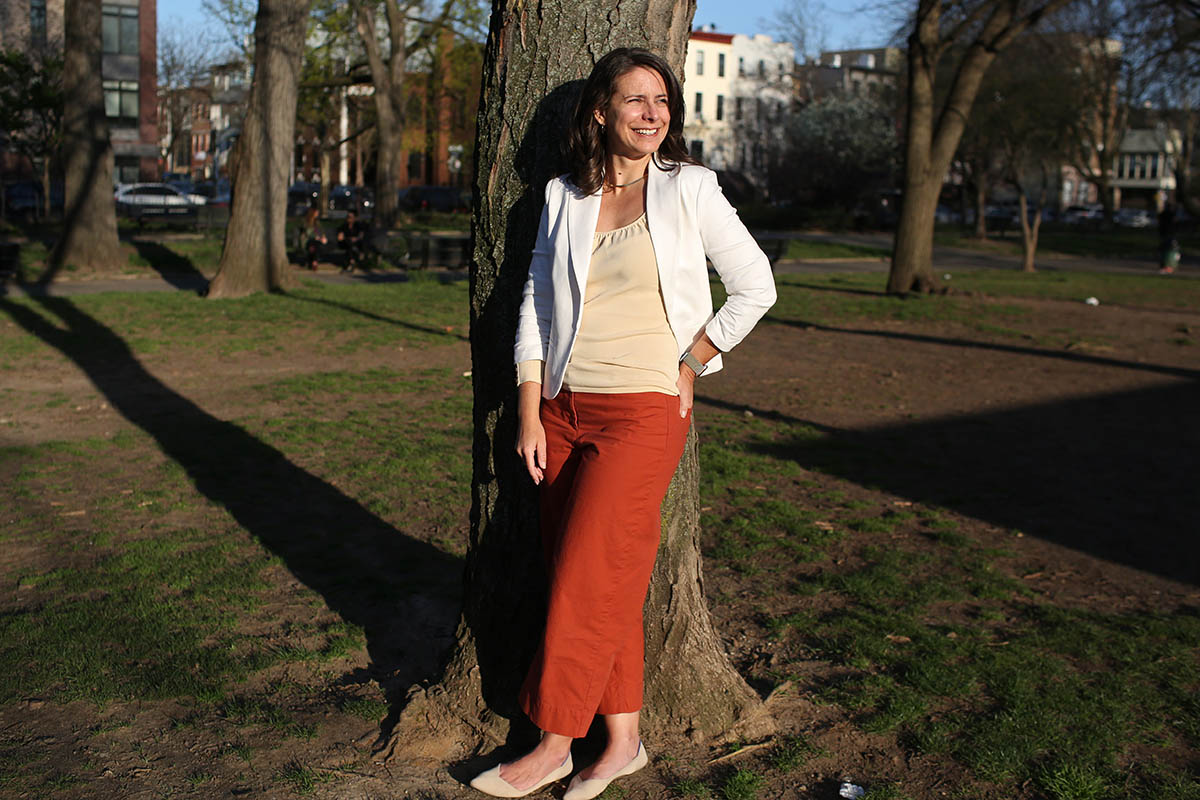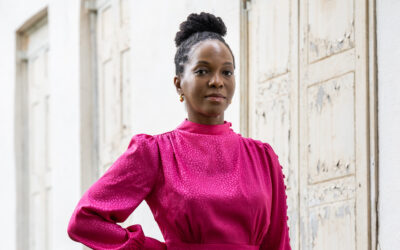Nicole Rawling ’97 is revolutionizing the materials we all use

Story by Nancy Shohet West ’84, portrait by Yana Paskova
A vegetarian since age 7, Nicole Rawling ’97 graduated from law school knowing she wanted to use her professional expertise to help animals. But she soon realized that, as a lawyer, her approach would by definition be adversarial.
“Working at a large San Francisco law firm for eight years, I sued factory farms for environmental violations,” Rawling says. “From there, I entered the nonprofit management sector and worked in a similar capacity for the Humane Society of the United States and the Animal Legal Defense Fund.” Although both roles aligned with her commitment to animal rights, she says, “It’s a lot of fighting. Litigation is about fighting, judgment, telling people they are wrong, forcing them to change their behavior.”
So she found her way into a rapidly emerging arena that helps animals and the environment in a different way. As director of international engagement at the Good Food Institute, Rawling promoted the development of plant-based protein alternatives to animal products, such as the Beyond and Impossible brands of vegetarian burgers.
And now, as CEO of the Material Innovation Initiative, which she co-founded in 2019, Rawling is making new inroads into the world of next-generation sustainable materials for the fashion, automotive, and home goods industries.
“Most people aren’t even aware that leather is bad for the environment,” Rawling says. “They think since it comes from an animal, it must be a natural product. Well, if you simply skinned the hide of any animal and left it untreated, it would decompose.” The process of making that same animal hide into a coveted purse, jacket, or pair of boots requires over 250 chemicals, including chromium, a known respiratory irritant and potential carcinogen, Rawling explains. Alternatives such as pleather typically require petrochemical processes, which also harm the environment.
The Material Innovation Initiative helps scientists, investors, and companies identify and create new materials that are plant-based. “These materials might be made of components as diverse as mushrooms, agricultural waste, or pineapple waste,” she says. The organization then matches the engineers and producers of sustainable materials with the companies that supply the end product, such as clothing designers and car manufacturers.
The goal is to create materials with a smaller carbon footprint and a lesser impact on the natural environment, says Rawling, but the approach is to make this enticing and easy, rather than punitive. “It’s easy in the world of environmental nonprofits to fall into the trap of ‘Don’ts’ and ‘Have to’s.’” she says. “You have to recycle. You have to turn off your lights. Don’t brush your teeth with the water running. Don’t drive or fly so much. We need to make it easier. I’ve never met anyone who wanted to hurt the environment. We just need to provide alternatives that are of reasonable cost and readily available to supply the market.”
“CA encourages us to think about how we can use our resources—money, expertise, connections, resources of all kinds—to better the world.”
Nicole Rawling ’97
For example, she said, even well-intentioned consumers who wish to buy clothes made of environmentally friendly materials may soon lose their determination if the process involves a lot of research into hard-to-find specialty shops whose products cost three times what they might otherwise spend. “We use the power of the markets to make these environmentally friendly products mainstream, convenient, and affordable,” she says.
“For us, it’s about creating win-wins while helping to make a positive impact,” Rawling says. “Investors win because products are in high demand. Fashion brands win because they can supply markets and consumers with products that are better for the environment. Meanwhile, we are helping them meet their corporate social responsibility goals. It’s a benefit for both the environment and for the company.”
Rawling understands that it will take a certain degree of educating consumers to convince them that an Hermès bag made from mushrooms is just as desirable as one crafted from Italian leather—and that no process is perfect. “We talk about progress instead of perfection,” she says. “Agricultural waste can be mixed with petrochemicals to make material. If it’s 70% agricultural waste and 30% petrochemicals, that’s still better than what you might have bought previously.”
Much of her ideology can be traced to her Concord Academy education, Rawling believes: “CA encourages us to think about how we can use our resources—money, expertise, connections, resources of all kinds—to better the world.”
As it happens, CA has provided Rawling’s company with even more than ideology. During an informal discussion that preceded a meeting of her board of directors, Rawling was delighted to learn that board member Amy Rosenfeld ’84 was a fellow alumna. “I loved the mission and thought it was a really cool initiative,” says Rosenfeld, a senior sports television producer. “I’ve always wanted to be involved in helping animals and helping the environment, and at this point I want to do more than write a check.”
Rosenfeld was intrigued that Rawling is working in a space that’s “a new frontier with the ability to change an industry for the greater good,” she says. “And once I learned she was a CA alum, I was convinced. For me, nothing is better confirmation of knowing that someone is on the right side of an issue than the fact that they are a graduate of CA.”


